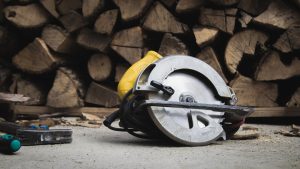Model building is a fascinating hobby that combines creativity, engineering, and attention to detail. At its core, model building involves creating a scaled-down representation of an object, whether it be a vehicle, a building, or even a character from a beloved franchise. The process typically begins with selecting a model kit, which often includes pre-molded parts that require assembly.
Understanding the basic components of model kits is essential for beginners. Most kits come with detailed instructions that guide the builder through the assembly process, highlighting the importance of following each step carefully to ensure a successful outcome. Familiarity with the terminology used in model building, such as sprues, decals, and assembly techniques, can significantly enhance the experience and help avoid common pitfalls.
As you delve deeper into model building, it becomes clear that this hobby is not just about assembling parts; it’s also about problem-solving and creativity. Each model presents unique challenges, from fitting pieces together to achieving the desired finish. Builders often find themselves experimenting with different techniques to achieve realism, such as weathering effects or custom paint jobs.
The satisfaction derived from overcoming these challenges is one of the many reasons why model building has captivated enthusiasts for decades. Moreover, the sense of accomplishment that comes from completing a model can be incredibly rewarding, fostering a deeper appreciation for craftsmanship and design.
Key Takeaways
- Understanding the basics of model building is essential for beginners to grasp the foundational concepts and techniques.
- Choosing the right materials and tools is crucial for achieving the desired level of detail and accuracy in model building.
- Tips for precision and accuracy in model building include proper measuring, cutting, and assembly techniques.
- Techniques for painting and detailing models can greatly enhance the overall appearance and realism of the finished product.
- Advanced model building tips and tricks can help experienced hobbyists take their skills to the next level and tackle more complex projects.
Choosing the Right Materials and Tools
Selecting the appropriate materials and tools is crucial for successful model building. The choice of materials can significantly impact the final appearance and durability of the model. Common materials used in model kits include plastic, resin, and metal.
Plastic is often favored for its ease of use and availability in various colors and textures. Resin models, while typically more expensive, offer greater detail and can capture intricate designs that plastic may not replicate as effectively. Metal components are often used in high-end models for added realism and weight, but they require specialized tools for cutting and shaping.
Understanding the properties of these materials will help builders make informed decisions that align with their project goals. In addition to materials, having the right tools is essential for precision and efficiency in model building. Basic tools include hobby knives for cutting parts from sprues, tweezers for handling small pieces, and files or sandpaper for smoothing edges.
A good set of paintbrushes and airbrush equipment can elevate the painting process, allowing for finer details and smoother finishes. Additionally, investing in a cutting mat can protect work surfaces while providing a grid for accurate measurements. As builders gain experience, they may find themselves expanding their toolkit to include more specialized items such as pin vices for drilling holes or scribing tools for adding panel lines.
The right combination of materials and tools not only enhances the building experience but also contributes to the overall quality of the finished model.
Tips for Precision and Accuracy in Model Building

Achieving precision and accuracy in model building is paramount to creating a visually appealing and structurally sound final product. One of the most effective ways to ensure accuracy is to take your time during the assembly process. Rushing through steps can lead to misaligned parts or mistakes that may be difficult to correct later on.
It’s advisable to read through the entire instruction manual before starting to familiarize yourself with the assembly sequence and identify any potential challenges ahead of time. Additionally, using a well-lit workspace can help you see details more clearly, reducing the likelihood of errors during assembly. Another key aspect of precision is measuring and cutting accurately.
When working with plastic or other materials, using a sharp hobby knife or precision scissors can make a significant difference in achieving clean cuts. Builders should also consider using a ruler or caliper to measure parts before cutting them to ensure they fit together seamlessly. For more complex models, dry-fitting parts before gluing them can help identify any issues with alignment or fitment.
This practice allows builders to make adjustments as needed without committing to glue until they are confident in their assembly. By prioritizing precision and accuracy throughout the building process, enthusiasts can create models that not only look great but also stand the test of time.
Techniques for Painting and Detailing Models
| Technique | Description |
|---|---|
| Basecoating | Applying the initial layer of paint to the model |
| Washing | Applying thinned paint to create shadows and depth |
| Drybrushing | Using a dry brush with minimal paint to highlight raised areas |
| Layering | Building up layers of paint to create smooth transitions |
| Detailing | Adding fine details such as eyes, insignias, and weathering effects |
Painting and detailing are critical steps in model building that can transform an ordinary assembly into a stunning representation of reality. The choice of paint is essential; builders often opt for acrylics due to their ease of use and quick drying times. Enamels are another popular option, known for their durability and rich colors but requiring more time to dry and clean up.
Regardless of the type chosen, proper surface preparation is vital for achieving a smooth finish. This may involve washing parts with soap and water to remove any oils from handling or lightly sanding surfaces to promote paint adhesion. Once the base coat is applied, detailing techniques come into play to add depth and realism to the model.
Washes—thin mixtures of paint applied over details—can accentuate panel lines and crevices, giving the model a more three-dimensional appearance. Dry brushing is another effective technique where a small amount of paint is applied to a brush and then lightly brushed over raised surfaces, highlighting details without overwhelming them with color. Additionally, decals can be used to add intricate designs or markings that enhance authenticity.
Mastering these painting techniques requires practice but can significantly elevate the overall quality of a model, making it stand out in any collection.
Advanced Model Building Tips and Tricks
For those looking to take their model building skills to the next level, there are several advanced techniques that can enhance both the complexity and realism of projects. One such technique is scratch-building, which involves creating custom parts from raw materials rather than relying solely on pre-made components from kits. This approach allows builders to add unique features or modify existing designs to better suit their vision.
Scratch-building requires creativity and resourcefulness but can lead to truly one-of-a-kind models that showcase individual style. Another advanced technique is weathering, which simulates wear and tear on models to create a more realistic appearance. This can involve various methods such as chipping paint with a sponge or applying pigments to mimic dirt and grime accumulation over time.
Builders may also experiment with different finishes—matte, satin, or gloss—to achieve specific effects that reflect how real-world objects would appear under various conditions. Additionally, incorporating lighting elements into models can add an exciting dimension; LED lights can be used to illuminate cockpits or create realistic effects in dioramas. By exploring these advanced techniques, builders can push their creative boundaries and produce models that are not only visually striking but also rich in narrative.
Troubleshooting Common Model Building Problems

Even experienced model builders encounter challenges during their projects; however, knowing how to troubleshoot common problems can save time and frustration. One frequent issue is misalignment during assembly, which can occur if parts are not fitted correctly before gluing. To address this problem, builders should take care to dry-fit components first and make any necessary adjustments before applying adhesive.
If misalignment occurs after gluing, carefully using a hobby knife or saw to separate parts may be necessary—though this should be done cautiously to avoid damaging surrounding areas. Another common challenge is paint-related issues such as bubbling or peeling. These problems often arise from applying paint too thickly or not allowing sufficient drying time between coats.
To prevent these issues, builders should apply thin layers of paint gradually rather than attempting to cover everything in one go. If bubbling occurs despite precautions, lightly sanding the affected area once dry can help smooth it out before applying additional coats. By being proactive about potential problems and knowing how to address them when they arise, builders can maintain momentum in their projects and achieve satisfying results.
Showcasing and Displaying Finished Models
Once a model is completed, showcasing it effectively becomes an important consideration for builders who want to share their work with others or simply enjoy it themselves. Display cases are an excellent option for protecting models from dust while allowing them to be viewed from all angles. Many enthusiasts opt for glass display cases that provide visibility while safeguarding against environmental factors like humidity or accidental damage.
Additionally, using stands or bases specifically designed for models can enhance presentation by elevating them off surfaces and providing stability. Lighting plays a crucial role in showcasing models as well; strategically placed LED lights can highlight details and create dramatic effects that draw attention to specific features. For those who enjoy photography, setting up a dedicated space with controlled lighting can help capture stunning images of completed models for sharing online or in print.
Backgrounds should also be considered; simple backdrops can help focus attention on the model itself without distractions from surrounding elements. By thoughtfully considering how to display finished models, builders can create an inviting atmosphere that celebrates their hard work and creativity.
Resources for Model Building Enthusiasts
For those passionate about model building, numerous resources are available to enhance skills and knowledge within this rewarding hobby. Online forums and communities provide platforms for enthusiasts to share tips, showcase their work, and seek advice on specific challenges they may encounter during projects. Websites dedicated to modeling often feature tutorials ranging from beginner basics to advanced techniques that cater to various interests within the hobby—be it aircraft modeling, automotive builds, or dioramas.
Books on model building are another valuable resource; many authors have compiled comprehensive guides covering everything from historical modeling techniques to modern advancements in materials and tools. Additionally, YouTube channels dedicated to modeling offer visual demonstrations that can be particularly helpful for those who learn best through observation rather than reading alone. Attending local hobby shops or conventions also provides opportunities for networking with fellow enthusiasts while discovering new products or techniques firsthand.
By leveraging these resources, model builders can continually expand their knowledge base and refine their skills while enjoying this fulfilling pastime.
If you are interested in model building, you might find the terms of use for various modeling tools and platforms relevant. Understanding these terms can help ensure that you are using resources legally and ethically while engaging in your model building projects. You can read more about the specific terms and conditions applicable to model building tools at this link. This information is crucial for both amateur and professional model builders to protect their work and understand their rights.
FAQs
What is model building?
Model building is the process of creating a physical or digital representation of an object, system, or concept. It is commonly used in various fields such as architecture, engineering, science, and business to visualize and test ideas before implementing them in the real world.
What are the different types of models used in model building?
There are various types of models used in model building, including physical models (such as scale models and prototypes), digital models (such as computer-aided design models and simulations), mathematical models (such as equations and algorithms), and conceptual models (such as diagrams and flowcharts).
What are the benefits of model building?
Model building allows for visualization, testing, and refinement of ideas before implementation, which can help to identify and address potential issues or improvements early in the design process. It also provides a way to communicate complex concepts and designs to others in a clear and tangible manner.
What are some common tools and techniques used in model building?
Common tools and techniques used in model building include 3D modeling software, physical modeling materials (such as wood, plastic, and clay), laser cutting and 3D printing technology, simulation software, and mathematical modeling software.
What are some examples of model building in different industries?
Model building is used in various industries, such as architecture (creating scale models of buildings), engineering (building prototypes of new products), science (developing mathematical models of natural phenomena), and business (creating simulations of market trends and consumer behavior).



